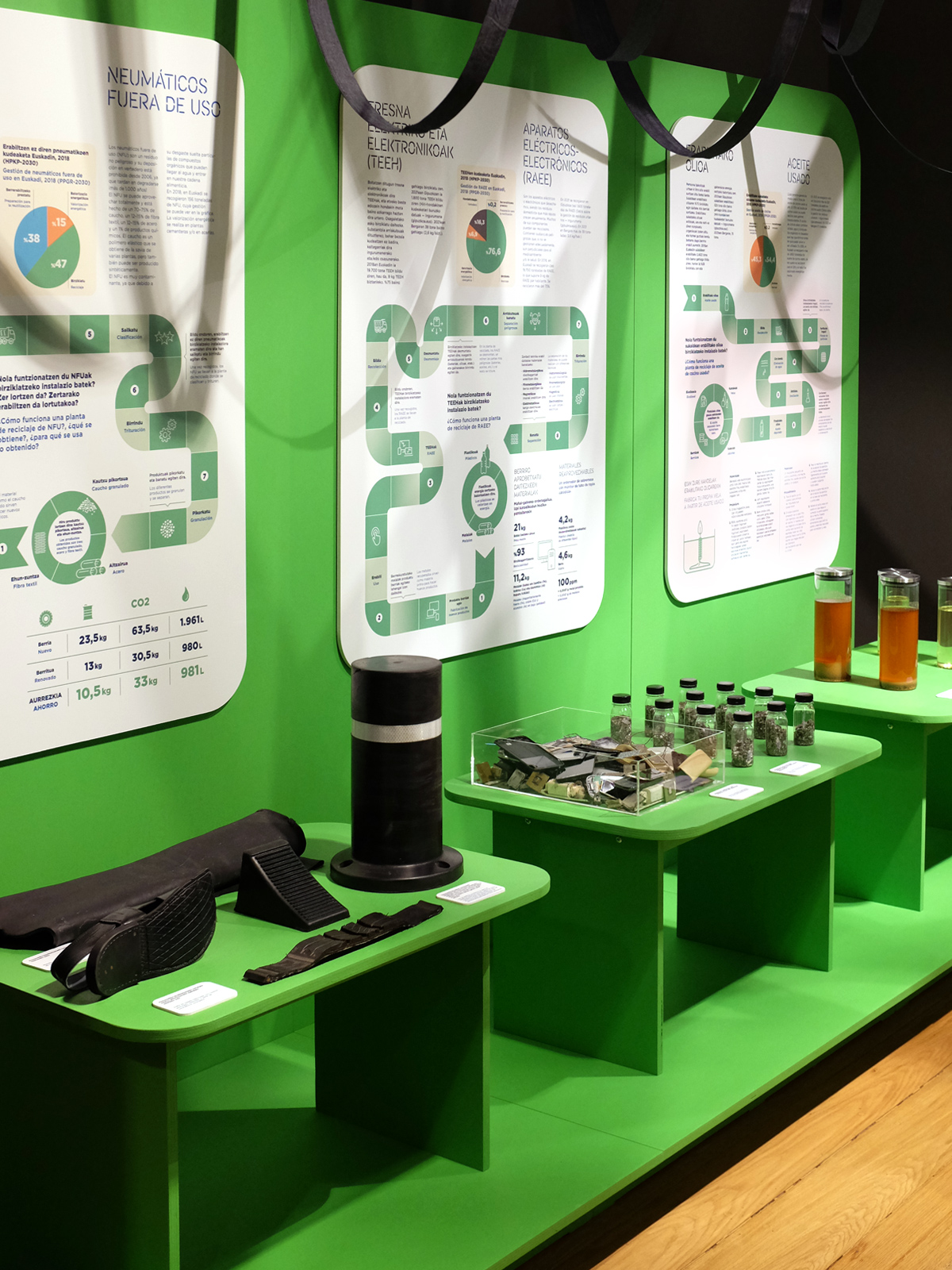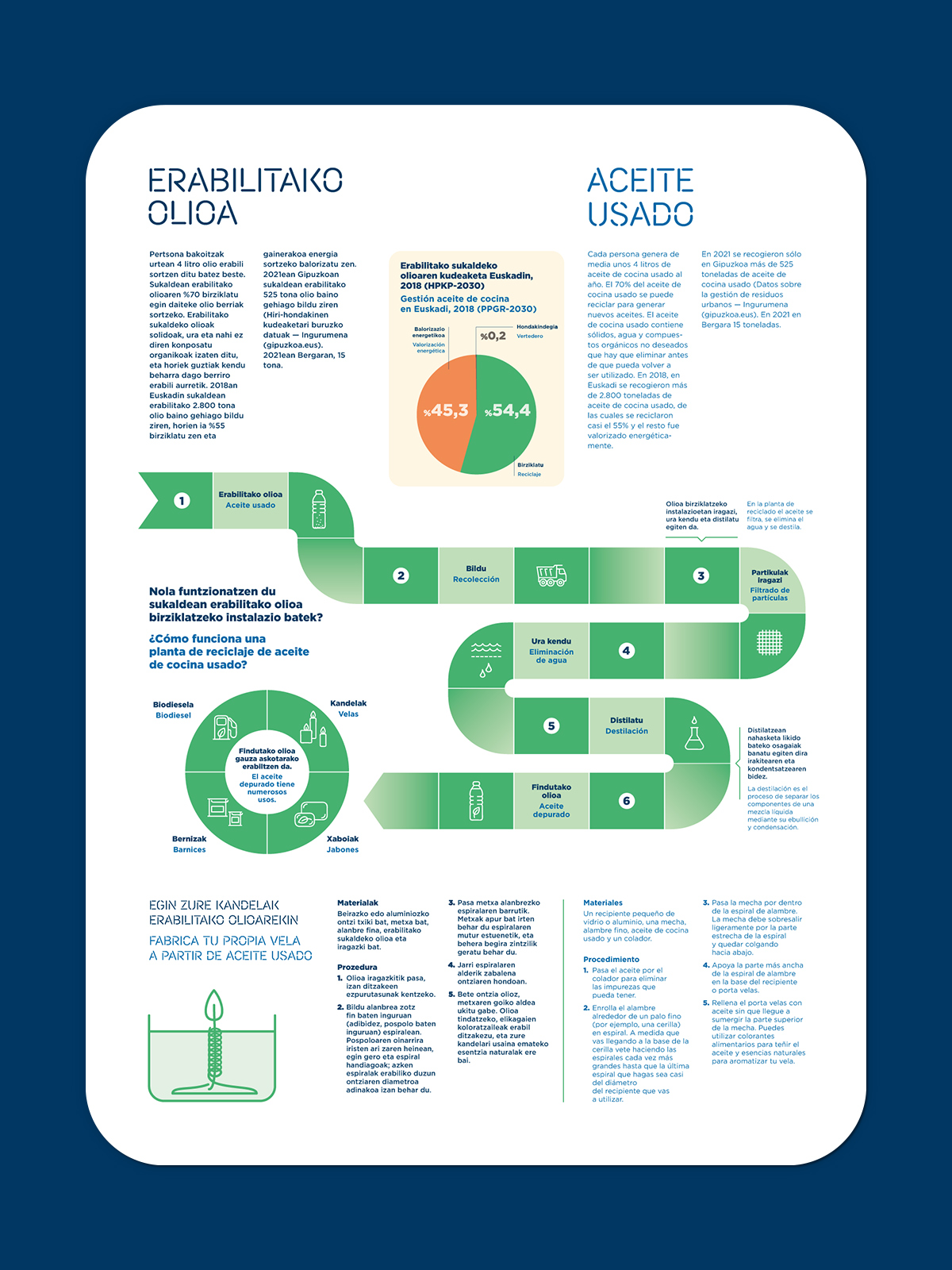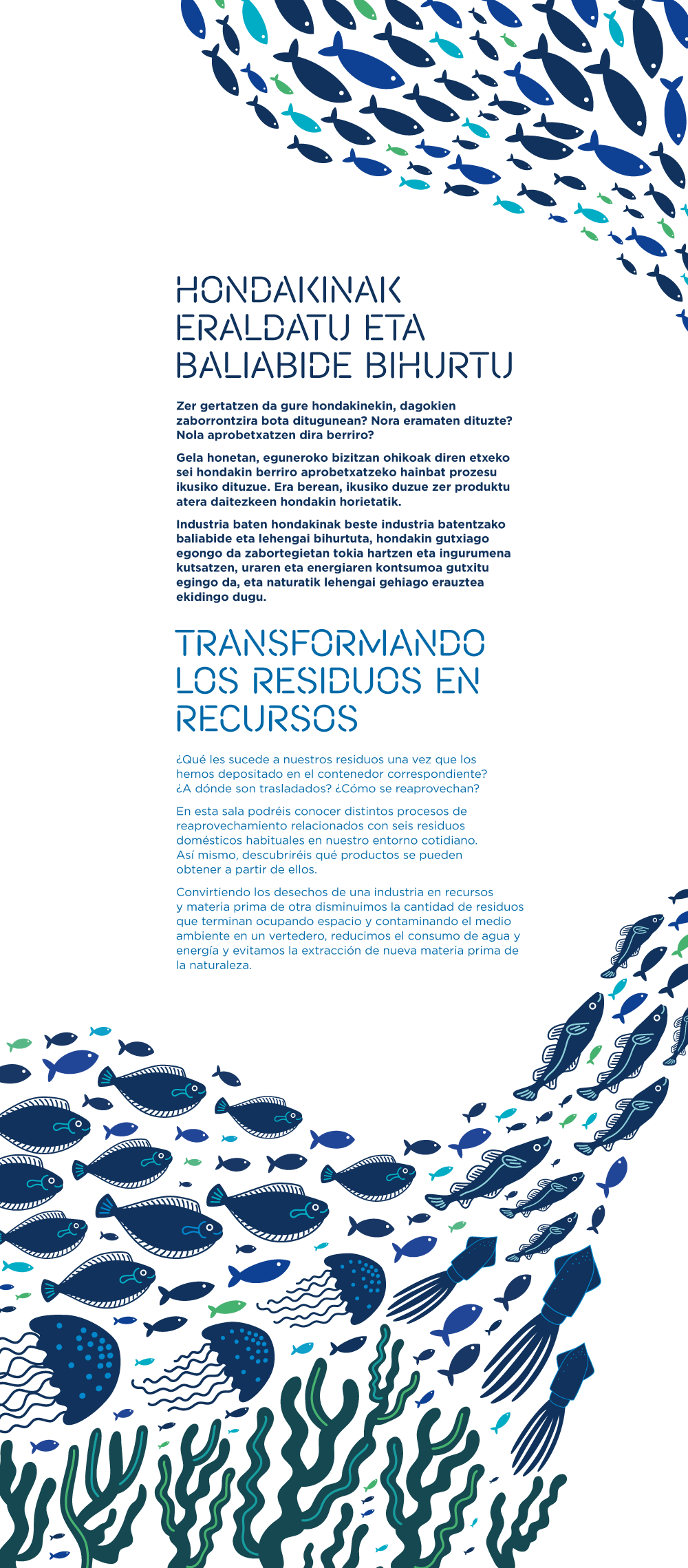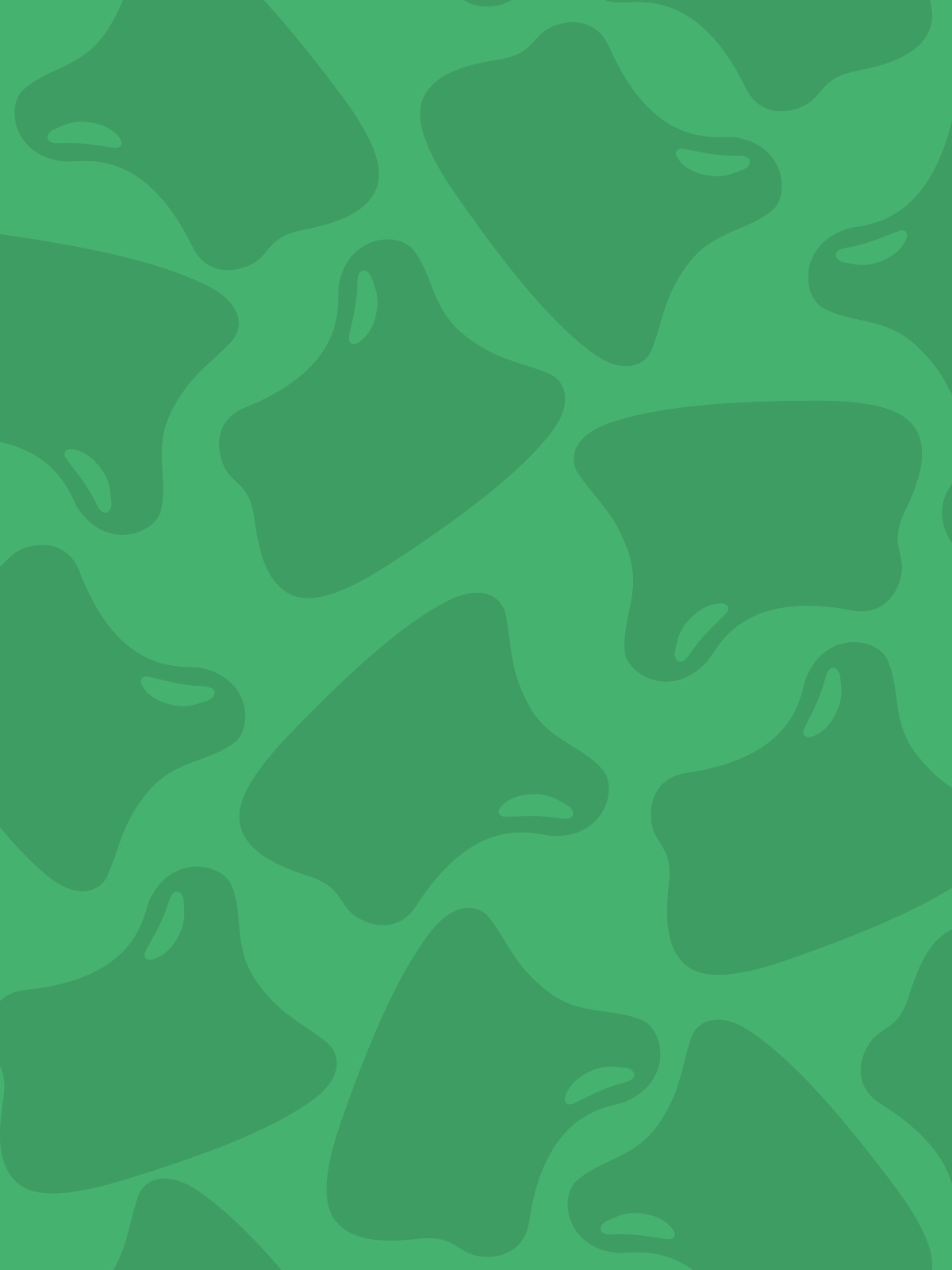
What is circular economy? How does it work? An exposition about the waste we produce and showing new technologies to transform and reuse it in new materials and products. Is it possible to make our waste sustainable and useful?
Client: Laboratorium Museum Bergara

We buy things, use them and after some time we throw them away. We have created a culture of fast consumption, a process that’s accelerating every day, everywhere in the world. Humans make use of numerous things and products which at the end of their use get thrown away in the garbage. Plastic ends up in rivers and oceans leaving a big footprint in the ecosystems. We use up our natural resources. This way of life is not sustainable and we have to find new ways to solve our waste problem. This exposition shows the differences between recycling, upcycling and circular economy and why circular economy is a promising way to a waste free world.

The idea behind the graphic concept of the exposition was, to illustrate a cleaning process of the seas. The museum where the exposition was shown, is located in the Basque Country. The Basque people have a close connection to the sea, the Atlantic Ocean – they have a lot of coastline, a long fishing tradition and not to forget that the area is world famous for surfing.


The main panels show swarms of fish and under water marine life, mainly species from the area. They are drawn in dark muted colours and there is lots of plastic waste floating with the fishes.

Did you know that… ? This table has 18 questions testing your knowledge about contamination and shows green facts how our waste is being transformed into new products.








These infographics illustrate the technical process how e.g. used vegetable oil, non rechargable batteries and old fabric are being reused in new products. The round modular "snake" form is inspired by the modular furniture that was also designed for the exhibition. All furniture can easily be removed and – and in an other occacios be setup in a different way.



As the visitor moves through the exposition and learns how circular economy works, the sea life graphics show less waste but more diverse species and plants with vivid colours.












There are quite a few local companies that are successfully implementing that new way of product manufacturing.
© CHRISTINE EBERHARDT 2023